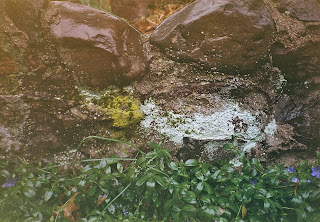
Digital photography is great. If you are a pro, there is really no other choice, it's just good business sense. If you shoot news, you can get your images uploaded to your wire service from the field immediately, and if you don't your competitors will. If you shoot events or products, the volume of a handful of SD cards means that the number of images that you can present to clients is limited only by how many files one person can practically edit in Lightroom without going insane. The rest of us regular folks can take pictures on our phones and get them up on Facebook or Instagram the minute they are taken. If I shoot an event for my company, it's always on my DSLR so I can put the files up into dropbox the same day. Film no longer has the advantage in quality anymore, either, not by a long shot. Last week I was walking through an outdoor art show at a county park. The photography there blew me away. A medium format or full frame DSLR will produce huge enlargements with so much detail, it's like you are there. If you are a novice, a prosumer DSLR will give you a tack sharp image with nice even exposure and perfectly rendered color, and it will do all of this for you, so all you need to think of is composing your shot.
So, what on earth is so great about using film besides the hipster appeal? First there is simplicity. The owners's manual for the Canon AE-1 is 72 pages. The owner's manual for the Nikon F3 is 46 pages. The owner's manual for the Nikon D90 (I know that it's obsolete, but, it's the most advanced camera that I currently own), is 278 pages. A 278 page owners manual!!!! Let that sink in for a minute.
Pick up a 35mm SLR from the 1970s or 1980s. Look through the viewfinder and turn the focusing ring on the lens and see the image smoothly come into focus. Turn the shutter speed dial (click, click, click). Turn the aperture ring (click, click, click). You know what is going on with the camera from tactile feel. It's a wonderful, confidence building experience. Most SLRs from this era have manual focus, and manual exposure (with a built-in electronic light meter). Maybe it has one automated exposure feature, if any, usually it is aperture priority. And that's it! Yes, you do have to pick an ISO and stick with it until the roll of film is finished, but, everything you really need to take a beautiful photo is at your fingetips with switches, knobs, and buttons, and no annoying layers of menus to swim through.
Composition, focus, and exposure are the three things that you need to control to take a good shot, there is nothing else to worry about until it is time to turn that light information on your film or on your SD card into a physical photograph. Manual film cameras give you the best hands-on control of these three things. Watch the needle on a simple meter move up and down while you turn the aperture ring and the shutter speed knob and the relationships between aperture, shutter speed, and exposure exposure stop being an esoteric concept.
My D90 is great, but it is a poor substitute for an actual manual camera for shooting manually, so I usually end up just using it in AF with one of the idiot modes.
Most classic 35mm film SLRs have the same controls in pretty much the same place (and when they don't they are easy enough to find) so, if you know how to use one, you can pick up another and start shooting with very little time looking it over. This common control layout is finally making a return on gorgeous, compact, digital camera bodies now, such as the amazing Fujifilm camera lineup...if you are ready to spend $1,000 dollars on a new camera body, that is.
Film makes you think a little differently. Don't try to compete with the fidelity offered by digital, unless you are shooting large format. Instead, try a black and white film with a cool grain structure or silky tones, or a color film with a vintage, romantic look. Having black and white film in your camera forces you to look for black and white shots. You are challenged to ignore the color information in your mind's eye, to look for light, shadow, texture, to "see" in black and white.
You only have 36 (or 24) exposures per roll, so you want to try to make each shot count for something. I go out and try to take one photo a day. Sometimes I don't even get that one photo because I don't see a shot on my walk every day. That's fine, though because going out and looking is what counts.
You have a real glass viewfinder, not an LCD. You don't have a rear display, and I find that to be a good thing. We are all looking at little, tiny screens all day. I find my smartphone distracting enough. I'm a social media addict. Right now, as I type this piece, I am fighting the urge to check Facebook for the 200th time since I woke up this morning. With film, you can't check your shot after you take it. You need to move on and hunt your next photo. It keeps you inside the world that you are shooting, not observing it on a computer monitor. The very mechanical-ness of film cameras make them very satisfying tools for the photographic craft, and when you find the right one for yourself, you will hate leaving your home without it.


























